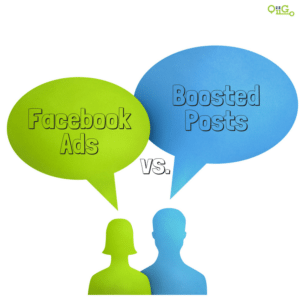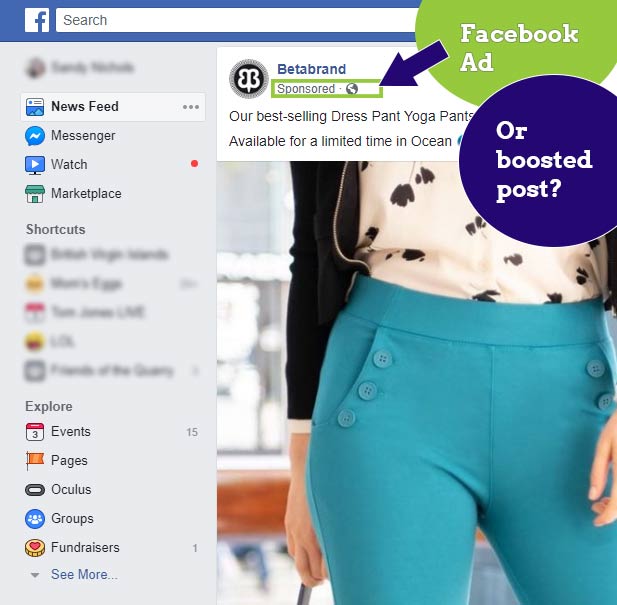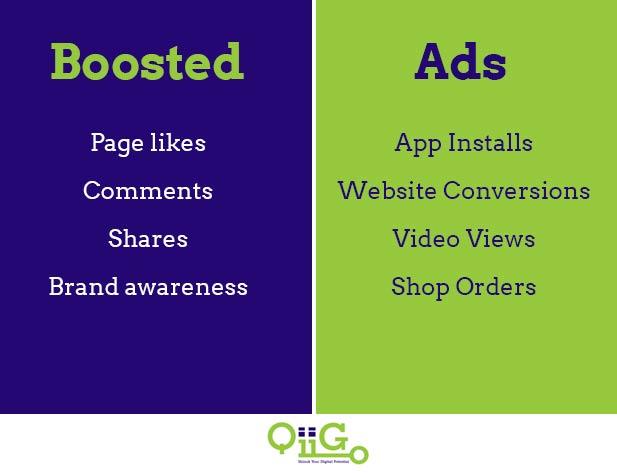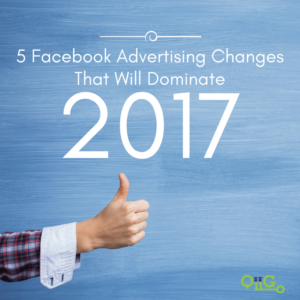
When you’re marketing your brand on Facebook, you might not know which options are right for your brand’s goals. If you’re unfamiliar with the fine details of social media marketing, it can be tough to nail down key decisions, like choosing between Facebook ads and boosted posts. In this look at Facebook ads vs. boosted posts, we examine the pros and cons of each and teach you when to use one vs. the other.
Facebook Ads
Some users find it hard to differentiate Facebook ads and regular posts. That’s because many ads appear directly in users’ News Feeds, right alongside status updates, photos, and videos from their friends. While ads always carry a “Sponsored Content” note in light gray text, they are sometimes indistinguishable from regular posts in other ways.
The biggest difference between Facebook ads and regular posts is what’s under the hood. Facebook ads offer a range of analytics options, offering several different ways brands can track ad engagement and define campaign goals. What’s more, Facebook ads offer highly specific targeting options, allowing you to target ads to users by age, gender, location, interests, and other criteria.
Facebook ads also have richer formatting options than Facebook posts, with options for carousel ads, slideshow ads, canvas ads, and more. Some of Facebook’s ad formats are built with specific campaign goals in mind, with options for ads that collect leads, direct users to your website, and promote products. Ads can also include call to action buttons, making them a more dynamic choice for social media marketing professionals.

Boosted Posts
Boosted posts are a little less complex than Facebook ads and are easier to get a handle on if you are used to Facebook’s News Feed. Unlike an ad, a boosted post is simply a regular Facebook post that you pay to reach a wider audience. This ensures that your post is seen by a larger number of users, or seen more often by users who are likely to engage with its content.
Facebook boosted posts have one key benefit over Facebook ads: free audience research. Most brands boost posts after they already have audience engagement data, making it possible to boost posts that they know perform well with their audience.
Thanks to Facebook’s Ad Manager, you will be able to target your audience with boosted posts in the same way that you target your ads. This can make the boosted posts feature especially useful if you are producing News Feed content that appeals to specific demographics.
“…boosted posts are still considered ads because they require budget to be shared with a wider audience.”
Facebook
Choosing Ads vs. Posts
Choosing between Facebook ads and boosted posts largely depends on your social media marketing goals.
Each format tends to encourage different outcomes. Facebook ads tend to have a bigger immediate impact and translate directly to campaign goals, like lead captures, app installations, and sales. On certain campaigns, the added functionality of Facebook ads might make them a better fit for your campaign. Meanwhile, boosted posts tend to improve your brand’s social media engagement metrics and overall social presence.
For specific campaigns, the decision between an ad and a boosted post will come down to long-term vs. short term outcomes. On a wider level, a mix of Facebook ads and boosted posts are usually the best way to break up your Facebook social media marketing budget. Boosted posts will allow you to build your brand’s reach and fan base, while ads can help you translate your brand’s presence into tangible outcomes. This one-two punch will allow you to build likes and fans, then turn your new followers into actual customers.

Build your brand’s social media marketing presence with help from the experts at Qiigo. Our team will help you reach campaign goals and build a raving fanbase on Facebook and other social platforms. Call (888) 673-1212 today to find out how.


